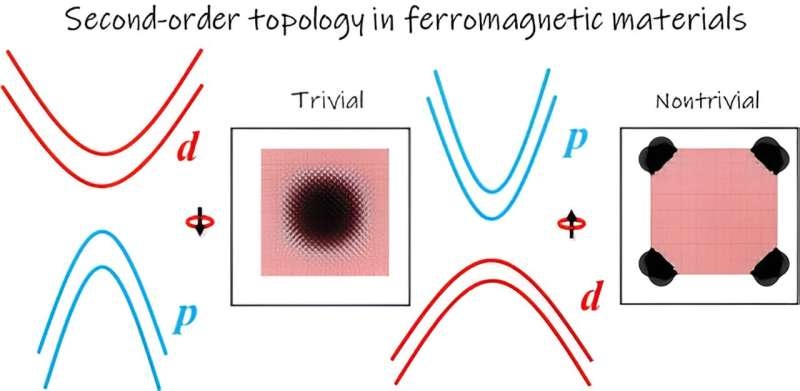Researchers from Monash University have made a remarkable discovery in the field of spintronics, unveiling a generic approach to create intrinsic magnetic second-order topological insulators. These materials hold immense potential for advancements in the emerging realm of spintronics, where spin degrees of freedom are leveraged to transmit information.

Bridging the Gap: Overcoming the Challenges of Strongly Correlated Materials
A notable class of intrinsic ferromagnetic semiconductors (e.g., CrI3,38 Cr2Ge2Te6439 and VI340), important in the context of spintronics studies, have received a considerable amount of attention over recent years.
Nevertheless, these materials are characterized by a complex of strongly correlated electrons. These materials, due to the strong electron-electron interaction between electrons, become atomic insulators and are no longer possessing the required topological characteristics.
Led by Dr. Zhao Liu and Professor Nikhil Medhekar, the research has revealed an elegant answer to this longstanding issue. In a few key intrinsic ferromagnetic semiconductors, the p orbitals of ligand anions can form an inverted orbital order with d orbitals from metal cations; this could be one of the determining factors in their topological properties.
Unlocking the Secrets of Inverted p-d Orbitals
In FMS based on p-d orbital configuration, p orbitals lie well below the d manifold for p:Zn = 0. In this scenario, the p orbitals form a closed shell that acts as a relay and mediates super-exchange interactions between the metal cations with open d shells.
But the scientists found that if the energy of the p orbitals is even somewhat higher than the d orbitals, an inverted p-d orbital order takes place. Apart from the ordering among two f-wave orbitals (as they naturally are paired with each other and ferromagnetically interacts via spin-orbit coupling), this type of inverted configuration is essential, as it can result in nontrivial topological order while its normal state would have a trivial topological order compared to the normally ordered p-d orbitals.
The research use plane-wave-based density-functional theory calculations accompanied with symmetry analysis of wave functions for 1T-VS2 and Inducted magnetic CrAs monolayer as the two types of intrinsic-magnetic second-order topological insulators. The opposite orbital order of corresponding p-d orbitals related with the occupied bands (d in matter I and p in matter II) has been found in both materials, whereas their unoccupied partners (p in matter I ind d in matter II), exhibit the same order as is presented in Fig. 1, thus giving non-trivial topology for one spin channel while triviality for opposite spin channel generally follows just because of appropriate level ordering.
Conclusion
All this work has revealed a universal way to make intrinsic magnetic second-order topological insulators, an essential step to realize spintronics In this way, what we have developed will be a pathfinder for the discovery of new topological materials based on inverted p-d orbital materials. These materials have immense applications, including in information processing and in forming the building blocks for quantum computing, and this work takes us closer to a more comprehensive understanding of their basic characteristics.
